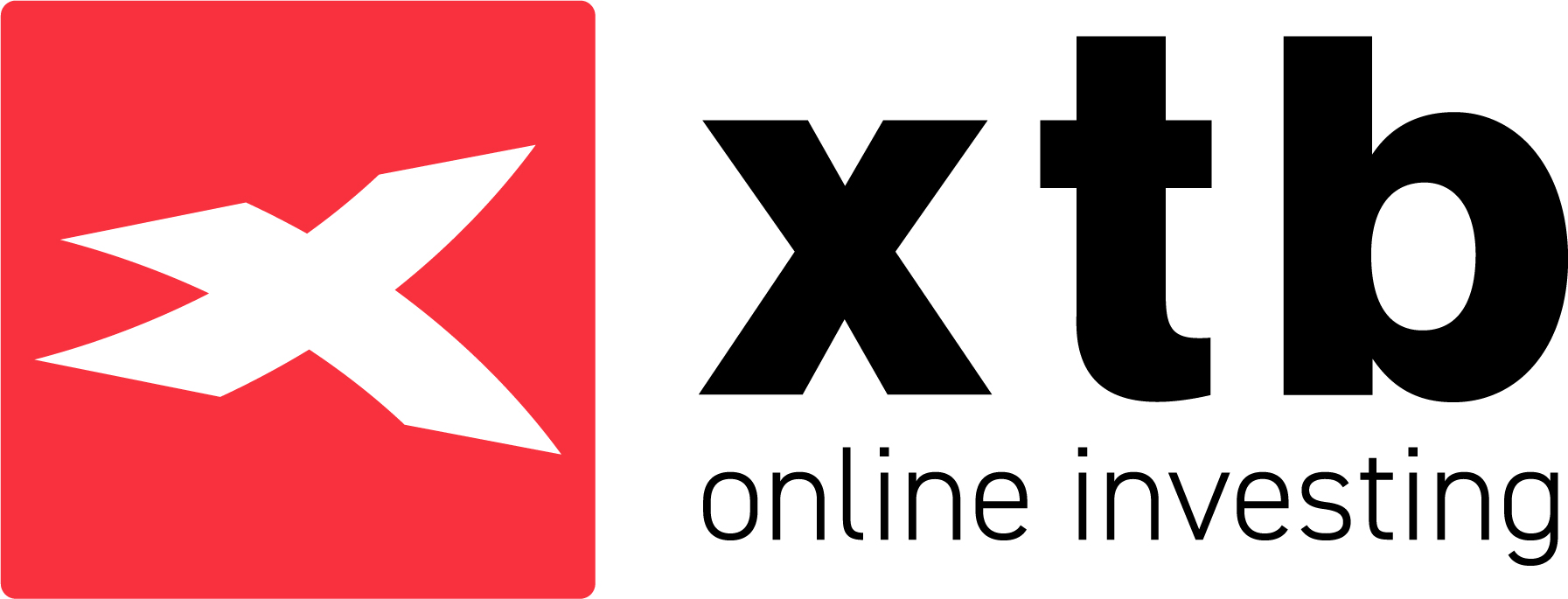Best S&P 500 ETFs UK to Watch
If S&P 500 ETF’s are something you would like to get involved in, you’ve come to the right place. This guide on 10 S&P 500 ETFs in the UK will explore some of the important features of this class of ETFs.
Key Points on S&P 500 ETFs in the UK
- There are heaps of ETFs that track the S&P 500 index, allowing most investors with a range of risk tolerances to gain exposure to the index via ETFs.
- Typically the only fees you’ll have to pay when trading ETFs is the expense ratio which can be as low as 0.07%.
10 Popular S&P 500 ETFs UK List
Here is a rundown of 10 popular S&P 500 ETFs UK based on trading volume. A more detailed analysis of each ETF will be provided in the next section.
- SPDR S&P 500 ETF
- Vanguard S&P 500 ETF
- iShares Core S&P Small-Cap ETF
- iShares Core S&P Mid-Cap ETF
- SPDR S&P Biotech ETF
- ProShares Short VIX Short-Term Futures ETF
- Invesco S&P 500 Low Volatility
- ProShares Ultra S&P 500
- SPDR Portfolio S&P 500 Growth ETF
- SPDR S&P 500 UCITS ETF
Cryptocurrency is now one of the most popular financial assets and offers the potential for huge growth and big returns in a quicker time than traditional stocks. Investing in crypto to diversify is also an effective way to hedge a portfolio over the long term. However, the volatility of crypto means there are some risks, so make sure you do your research before investing.
- Read more and start investing in crypto now.
S&P 500 ETFs UK Reviewed
As you can see above, there are a variety of ETFs that are based on the S&P 500 index. Each ETF has its own individual focus, meaning there is an option for every risk appetite. However, with so many to choose from, it can be difficult to analyse them all and decide which one suits you.
In the section below, we will touch on each of the S&P 500 ETFs mentioned above.
1. SPDR S&P 500 ETF
The SPDR S&P 500 ETF is one of the most popular ETF’s globally and is included in a vast number of people’s portfolios. It tracks the S&P 500 index’s performance, and will buy shares of 500 mid-cap and large-cap US equities.
This ETF is fantastic for its diversification benefits, as it includes stocks from sectors such as IT, healthcare, financial services, industrials, and more. The three most heavily weighted within this ETF are Apple, Microsoft, and Amazon.
If you invest in this ETF, you are essentially investing a portion of money into each constituent of the S&P 500. The size of the portion depends on the ETF’s weighting, so if you invested in the SPDR ETF, you would have more of an ‘investment’ in Apple, Microsoft and Amazon than you would in the other equities within the fund.
2. Vanguard S&P 500 ETF
Like the previous fund, the Vanguard S&P 500 ETF tracks the performance of the S&P 500 index, investing in all 500 constituents.
This ETF has a low expense ratio. A lot of ETF’s charge expense ratios creep close to 1% each year; although it doesn’t sound like much, it can add up if you invest more significant amounts. The Vanguard S&P 500 ETF only charges 0.07%, so if you invest £1000 in it for a year, you will only have to pay 70p in fees!
With assets under management of $26.8billion, this ETF is incredibly popular worldwide. What’s more, it even pays a quarterly dividend – meaning you will receive a cash payment every three months, calculated as a percentage of your investment.
3. iShares Core S&P Small-Cap ETF
If you like the idea of investing in the S&P 500 but want to gain more exposure to small-cap stocks, then this is for you. This fund tracks the performance of a selection of small-cap US equities rather than mid-cap or large-cap funds.
4. iShares Core S&P Mid-Cap ETF
Similar to the previous ETF, the iShares Core S&P Mid-Cap ETF invests in a selection of US equities based on the S&P 500. However, as the name implies, this fund focuses more on mid-cap stocks. Again, although not strictly an S&P 500 ETF, this fund is similar in the sense that it utilises some of the same elements and attempts to replicate or even beat the returns generated by the S&P 500.
One thing about this ETF is it pays a quarterly dividend, meaning you get a nice cash bonus every three months. What’s more, over the long-term, it has generated some return for investors, averaging approximately 9.52% each year.
5. SPDR S&P Biotech ETF
Investing in an S&P 500 ETF that provides exposure to the biotech sector is an attractive prospect for many traders, as the potential returns are enormous, especially with the R&D boost that the Coronavirus pandemic has caused.
The SPDR S&P Biotech ETF derives its investments from companies that operate within the biotech sector. The majority of the companies within this ETF are small-cap, with a few being classed as mid-cap. Due to this, it is a little riskier than an investment in a typical S&P 500 ETF.
6. ProShares Short VIX Short-Term Futures ETF
This S&P 500 ETF is slightly different from the others in terms of how it makes a return. Rather than generating a return based on the movements of the underlying S&P 500, this ETF instead generates a return based on VIX futures. These futures are contracts based on the VIX, an index that tracks the volatility of another asset (in this case, the S&P 500).
Although this may seem confusing, it can be thought of as a way to speculate on how volatile the market will be at a particular time. However, with this VIX ETF, you are speculating on the inverse of what will happen.
Unlike other ETFs, this one provides investors with short exposure who seek to profit from decreases in the volatility of the S&P 500. If you think that the S&P 500 will be less volatile over the next six months, you could invest in this ETF and make a return if your prediction comes true!
7. Invesco S&P 500 Low Volatility
The Invesco S&P 500 Low Volatility tracks the returns of the S&P 500 Low Volatility index, which is made up of equities that are less risky but tend to generate a lower return.
8. ProShares Ultra S&P 500
ProShares are an ETF and bond provider, being traded on various exchanges. The ProShares Ultra S&P 500 offers an investment that aims to double the daily performance of the S&P 500 index before fees and expenses.
This ETF has a slightly higher expense ratio of 0.91% – still pretty negligible in the grand scheme of things. However, the fund has recorded an impressive return of 50.21% over the past year alone. Although this is an outlier, it showcases the type of returns that this ETF can produce.
9. SPDR Portfolio S&P 500 Growth ETF
Another ETF offered by SPDR is the S&P 500 Growth ETF. This fund aims to replicate the S&P 500 Growth Index’s performance, which comprises equities that exhibit ‘growth’ characteristics. These characteristics can take many forms but typically highlight a company that is expected to grow at a higher rate than the market average.
This ETF has experienced an incredible 68.62% return in the last year alone. However, since January of this year, it is currently down 0.51% overall. This highlights the volatile nature of investing in growth stocks. Also, it has a very cheap expense ratio of only 0.04% annually.
10. SPDR S&P 500 UCITS ETF
The final ETF we are going to touch on today is the SPDR S&P 500 UCITS ETF. This ETF aims to make a similar return to the S&P 500 index whilst also providing a reliable quarterly dividend to investors.
In 2020, this ETF returned 13.46%, which is a solid return considering the scale of the Coronavirus pandemic. Furthermore, this ETF has an expense ratio of only 0.09%, making it fall in line with other cheap ETFs. Finally, with a 12-month dividend yield of 1.25%, you can receive a solid quarterly payment that adds to this ETF’s attractiveness.
Fundamentals of S&P 500 ETFs
As the above section highlights, there are numerous S&P 500 ETFs to choose from. The question is – which one is right for you?
Returns
The first thing to consider is the returns you would like to make.
Looking at the S&P 500 over the past ten years, the index has returned an average of 13.6% each year. If you had invested in an ETF based on the S&P 500, this is the sort of return you can expect on average. This is a larger return than the FTSE 100 traded on the London Stock Exchange, which only returned an average of 7.38% per year.
Risk tolerance
Another crucial element you must consider is your risk tolerance. Although the S&P 500 is thought of as a ‘safe’ investment in some circles, this does not mean it is 100% risk-free. In the past ten years, it has only made a negative annual return in one year; however, this highlights that there is always that element of risk when investing in these kinds of ETFs.
Fees
The nature of ETFs means that there will always be a small percentage of fees attached; this is often referred to as the expense ratio. However, ETFs are popular due to the low level of these fees relative to other assets such as mutual funds.
S&P 500 UK Brokers
After you have determined which S&P 500 ETF is for you, the next step involves choosing an appropriate investment platform. There are various options available to investors these days, each one offering a different selection of features and varying fee structures.
To help you decide, we have chosen our stock brokers for investing in an S&P 500 ETF. The section below discusses the features and fees associated with each one.
1. XTB
XTB is a popular UK stock broker that offers trading on more than 2,100 shares and ETFs – all 100% commission-free. Furthermore, spreads at this broker start at just 0.015% for US-listed stocks, making it one of the cheapest options available for UK traders. XTB doesn’t require a minimum deposit to get started and the broker doesn’t charge deposit or withdrawal fees.
XTB’s custom-built stock trading platform – xStation 5, is also available for the web and mobile devices and it comes packed with research tools. You’ll find technical charts and dozens of studies to start, plus a market news feed that includes actionable trade ideas with annotated price charts. The platform also has a market sentiment gauge which allows users to easily see what other traders think about where a stock’s price is headed.
XTB’s platform also includes a stock and ETF screener, which can be really useful for traders. With this tool, users can easily scan the market for stocks that are taking off or that seem poised for a fall. Using the screener, it’s possible to create watchlists and narrow down your search to find better trading opportunities.
XTB is regulated by the UK FCA and CySEC and offers negative balance protection for all traders. In addition, the broker offers customer support by phone, email, and live chat, available 24/5.
76% of retail CFD accounts lose money.
2. AvaTrade
AvaTrade is a UK CFD broker that offers 0% commission trading on over 600 global stocks. The platform also carries dozens of exchange-traded funds (ETFs), stock indices, commodities, and forex pairs for trading. Notably, AvaTrade also offers trading on forex options – but it doesn’t offer stock options at this time.
AvaTrade has a few different trading platforms you may use to trade stocks. Like Pepperstone, this broker gives all traders access to MetaTrader 4 and 5.
Alternatively, the AvaTrade web trading platform and AvaTradeGO platform are available on iOS and Android devices as well . You get watchlists, a market news feed, and dozens of technical studies. On mobile devices, users can access full-screen charts and enter orders with just a few taps.
AvaTrade also has its own social trading app for iOS and Android, called AvaSocial. Although this isn’t integrated into AvaTradeGO, it’s simple to switch back and forth between sharing ideas and setting up trades. AvaSocial also enables copy trading, so you have the ability to mimic the portfolios of more experienced stock traders in just a few taps.
AvaTrade is regulated by the UK FCA and Australia’s ASIC. The platform requires a $100 minimum deposit to open an account and you may pay by credit card, debit card, or bank transfer. AvaTrader offers 24/5 customer service.
Your capital is at risk.
3. FP Markets

One of FP Markets’ standout features is its commitment to offering competitive pricing with tight spreads, ensuring that traders can maximize their profits. The broker also supports various trading platforms, such as MetaTrader 4, MetaTrader 5, and IRESS, allowing traders to choose the platform that best suits their trading style and needs.
FP Markets strongly emphasizes education and resources, providing traders with access to a wealth of educational materials, webinars, and market analysis. This dedication to trader education helps both beginners and experienced traders enhance their trading skills and make informed decisions.
Customer support at FP Markets is highly responsive and available 24/5, ensuring that traders receive prompt assistance whenever needed. Additionally, the broker is regulated by top-tier authorities like ASIC and CySEC, providing traders with a sense of security and trust.
In summary, FP Markets stands out as a reliable and versatile broker. It offers a robust trading environment supported by competitive pricing, excellent educational resources, and top-notch customer service.
Your capital is at risk
4. Pepperstone
Pepperstone is a popular UK stock brokers for traders who want to use MetaTrader 4 or 5. These popular trading platforms offer unparalleled tools for technical analysis, including the ability to create custom technical studies. You may also backtest trading strategies against historical price data to see how they are likely to perform.
This broker also offers a few extra tools that are built specifically for MetaTrader. For example, there’s a correlation heatmap so investors will be able to see whether the stocks you’re invested in typically move at the same time. There’s also an alarm management tool that lets you create custom alerts based on price changes, trading volume, and more.
Pepperstone carries thousands of share CFDs from the US, UK, Europe, and Australia. The broker’s charges vary based on the market you’re trading – US shares trade commission-free, while UK shares carry a 0.10% commission. So, this broker can be slightly more expensive than some of its peers.
Pepperstone is regulated by the UK FCA and the Australian Securities and Investments Commission (ASIC). The platform doesn’t require a minimum deposit to open an account, which is a major plus if you’re not ready to commit hundreds of pounds to trading just yet.
Your capital is at risk.
5. PrimeXBT
PrimeXBT is an innovative stock broker that caters to a diverse range of traders, from beginners to seasoned professionals. Known for its versatility and user-friendly interface, the platform offers an array of features designed to enhance the trading experience across multiple asset classes.
One of the standout aspects of PrimeXBT is its wide range of available markets. Users can trade in cryptocurrencies, forex, commodities, and indices all from a single account. This flexibility allows traders to diversify their portfolios and take advantage of different market opportunities without needing to switch between platforms.
PrimeXBT offers a suite of trading tools and advanced charting options to help traders make informed decisions. The platform integrates customizable indicators, drawing tools, and multiple timeframes, enabling users to tailor their charts to suit their individual trading strategies. Additionally, PrimeXBT provides leverage trading options, which can amplify potential profits for experienced traders.
The platform’s trading interface is sleek and intuitive, designed to make navigating the markets straightforward. Opening, managing, and closing trades can be done with ease, while the performance of live trades can be tracked in real-time. PrimeXBT also offers an innovative feature known as Covesting, which allows users to follow and replicate the trades of successful strategy managers, providing an educational and potentially profitable experience.
PrimeXBT also prioritizes the security and privacy of its users. The platform employs industry-standard security measures to safeguard user accounts and data, such as two-factor authentication and encryption. Customer support is available to assist traders with any queries they may have, ensuring a smooth and reliable trading experience.
In summary, PrimeXBT stands out as a comprehensive trading platform offering a variety of markets, robust tools, and an easy-to-use interface. Its emphasis on security, diverse asset offerings, and innovative features like Covesting make it an excellent choice for traders looking to explore and capitalize on global market opportunities.
Your capital is at risk.
6. Admiral Markets
Admiral Markets is a globally recognized online trading broker known for its comprehensive range of financial instruments and user-friendly platforms. With a presence in over 40 countries, the company has built a strong reputation for providing a reliable and secure trading environment for both beginner and experienced traders.
One of the standout features of Admiral Markets is its extensive selection of trading instruments, including Forex, stocks, commodities, indices, and more. This variety allows traders to diversify their portfolios and explore different markets with ease. The broker offers competitive spreads and flexible leverage options, catering to various trading styles and strategies.
Admiral Markets is also praised for its robust platforms, particularly MetaTrader 4 and MetaTrader 5, which are equipped with advanced charting tools, technical indicators, and automated trading capabilities. These platforms are available on both desktop and mobile devices, ensuring seamless trading experiences across all devices.
The broker places a strong emphasis on education, providing a wealth of resources such as webinars, tutorials, and market analysis to help traders make informed decisions. Additionally, Admiral Markets is regulated by several reputable financial authorities, ensuring a high level of trust and transparency.
Overall, Admiral Markets stands out as a top-tier broker, offering a comprehensive trading experience supported by excellent customer service and innovative tools.
Your capital is at risk
7. Trade Nation
Trade Nation is a well-established stock broker known for its reliability and comprehensive range of services. As an FCA regulated broker, traders can trust that their investments are in safe hands. Trade Nation offers a diverse selection of trading options, including stocks, CFDs, spread betting, and forex trading. One of the standout features of Trade Nation is its commitment to providing low-cost fixed spreads, starting from an impressive 0.6 pips for CFDs, ensuring traders can navigate the markets without any surprise fees.
In addition to its impressive range of services, Trade Nation offers compatibility with popular trading platforms, including MetaTrader 4 (MT4) and TN Trader. MetaTrader 4 is renowned for its user-friendly interface and advanced charting capabilities. It is a preferred choice for many traders due to its extensive range of technical indicators, customizable charts, and automated trading options through Expert Advisors (EAs). With Trade Nation’s integration of MT4, traders can access a seamless trading experience with all the familiar features they rely on for their trading decisions.
Trade Nation has developed its proprietary trading platform, TN Trader, catering to traders who prefer a platform tailored to the broker’s offerings and user experience. TN Trader boasts a user-friendly interface and is equipped with a suite of tools, including advanced charting, analysis tools, and real-time market data. It is an excellent option for traders who prefer a platform specifically designed to complement Trade Nation’s services and trading conditions.
Trade Nation also provides regulated signals software that can be used to guide stock trading decisions. As well as this, users can also access a variety of educational resources and analysis tools that can be used to improve trading strategies and make informed stock trading decisions. Users can practice different strategies with the free demo account.
75% of retail investor accounts lose money when trading CFDs with this provider.
8. IUX.com

IUX.com boasts competitive spreads, a key factor for maximizing your profit potential. They also advertise high leverage, which can amplify gains (and losses) for experienced traders comfortable with calculated risks. The MT5 platform is a user-friendly and powerful tool, providing advanced charting functionalities and a robust set of technical indicators to help you make informed trading decisions.
IUX.com understands that every trader has unique needs. That’s why they offer a variety of account types, allowing you to select the option that best suits your capital and trading style. This level of flexibility ensures you can enter the market with confidence, knowing your account is set up for your specific goals.
If you’re looking for a forex broker that prioritizes your trading experience, IUX.com is definitely worth considering. Their diverse platform, competitive offerings, and focus on trader empowerment make them a compelling choice for those seeking to navigate the forex market.
Your capital is at risk.
9. Fineco Bank

Fineco Bank is also popular with UK investors as it allows you to get started with a small investment of £100. If you do feel comfortable investing on a DIY basis, Fineco Bank offers multiple research tools and ongoing market commentary.
When it comes to safety, Fineco Bank is heavily regulated. Your funds are protected by the FSCS and the broker holds that all-important FCA license
| Commission | Starting from £0 commission on FTSE100, US and EU Shares CFDs, market spread only and no additional markups. |
| Deposit fee | Free |
| Withdrawal fee | $0 |
| Inactivity fee | None |
| Account fee | None |
| Minimum deposit | £0 |
| Stocks markets | Access to 13 stock markets |
| Tradable assets | CFDs, Forex, Commodities, Stocks and ETFs, indices, mutual funds, bonds, options, futures, |
| Available Trading Platforms | Web-based trading platform, mobile trading app, desktop trading platform |
Your capital is at risk.
Conclusion
To summarise, investing in S&P 500 ETFs is one potential way to earn a passive income. As these ETFs comprise firms from the US equity market, they provide an avenue to positive annual returns, along with supplying diversification benefits to your portfolio.
As mentioned in this guide, there are a wide variety of ETFs to choose from, each one with its own merits. However, you must heed investment advice and do your own due diligence before investing in an S&P 500 ETF.





